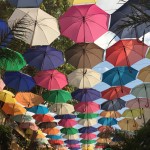Up Helly Aa
January 26, 2016 by Scran | 0 comments
Up Helly Aa celebrations take place on the last Tuesday of January . They are one of the United Kingdom’s most spectacular winter festivals. The festival, centred in Lerwick on the Shetland Islands, takes a year to plan and spans two days.
Roots
The modern version of Up Helly Aa – meaning “end of holidays” – has its origins around 1815 when young men returned from the Napoleonic war where they had experienced the banging of drums, fires, and guns. Out of such excitement came a desire to create an event which would enliven the long dark winter months. Early activities, particularly tar-barrelling where lit barrels of tar were pulled along the narrow street towards rival gangs, gave way to a more organised festival and by the 1950s the modern Up Helly Aa had evolved. The Festival is based around both the legends of Norse mythology and the very real links between Shetland and Norway which go back more than 1000 years. In the old Norse calendar Up Helly Aa was the last day of the winter festival and was celebrated on the 24th day following Yule. Shetland’s Up Helly Aa is held on the last Tuesday in January and concludes with the burning of a replica Viking long boat.
The Festival is based around both the legends of Norse mythology and the very real links between Shetland and Norway which go back more than 1000 years. In the old Norse calendar Up Helly Aa was the last day of the winter festival and was celebrated on the 24th day following Yule. Shetland’s Up Helly Aa is held on the last Tuesday in January and concludes with the burning of a replica Viking long boat.
Guizers & the Jarl
 Each year, a Guizer Jarl or leader is nominated and the whole community work for some considerable time building and naming a new galley. Costumes and 1000 torches are prepared and arrangements are made for a series of parties. The Guizer Jarl (Head Viking) will have nominated himself to the Up Helly Aa committee 15 years in advance. It is therefore a long wait to fulfil the role. Preparation includes the selection of a squad of around 50 men who will form the squad. Direct debits will be set up over 15 years to pay for each costly suit (around £1,000) and other event costs. Being part of the Jarl squad is an honour and men spend long hours preparing their costumes and rehearsing.
Each year, a Guizer Jarl or leader is nominated and the whole community work for some considerable time building and naming a new galley. Costumes and 1000 torches are prepared and arrangements are made for a series of parties. The Guizer Jarl (Head Viking) will have nominated himself to the Up Helly Aa committee 15 years in advance. It is therefore a long wait to fulfil the role. Preparation includes the selection of a squad of around 50 men who will form the squad. Direct debits will be set up over 15 years to pay for each costly suit (around £1,000) and other event costs. Being part of the Jarl squad is an honour and men spend long hours preparing their costumes and rehearsing.
Blazing Long Ship
 On Up Helly Aa morning the Jarl Squad meets, accompanied by the local brass band. All march to the Lerwick Legion where they receive their first dram of the day. Waiting outside are crowds of school children, locals and tourists – and, of course, the new galley, especially named for the day. The Guizer Jarl – wearing traditional Viking apparel – hoists his axe aloft aboard his long ship and calls on his Jarl Squad to begin the Festival. The Squad then processes through the town centre led by the Jarl. They carry banners and weapons as though on a raid.
On Up Helly Aa morning the Jarl Squad meets, accompanied by the local brass band. All march to the Lerwick Legion where they receive their first dram of the day. Waiting outside are crowds of school children, locals and tourists – and, of course, the new galley, especially named for the day. The Guizer Jarl – wearing traditional Viking apparel – hoists his axe aloft aboard his long ship and calls on his Jarl Squad to begin the Festival. The Squad then processes through the town centre led by the Jarl. They carry banners and weapons as though on a raid.
The Proclamation
At this stage they deliver their “Proclamation” to the town – a light hearted document – which is displayed at the Market Cross in the town centre. Many folk stop to read and have a laugh as they read it. The proclamation (or bill) is erected as a large billboard which has been skilfully painted by local artists. The text includes local political topics and personal jokes. The Jarl squad spend the rest of the day visiting schools, hospitals, houses and the local museum.
The Last Rites
At 7.30pm, the leaders use crimson flares, or maroons, to signal the lighting of the torches and the start of the procession. Torches are wooden stakes, the size of fence posts, dipped in a combustable resin. They resemble giant matches. Lit by torchlight, the procession makes its way along King Erik Street and the Galley makes her last journey to the special burning site. Guizers, the Jarl’s men, wear specially made costumes inspired by mythological creatures such as serpents, double-headed eagles, and dragons. At the “Last Rites”, the procession reaches the burning site. The Galley is positioned as a centrepiece and the glowing torches are thrown into the boat. The flames engulf the galley reminiscent of a Viking leader’s burial. Only then are the feasting halls opened to receive squads. Those not involved in the procession have prepared food and set up parties. As dictated by tradition, the squad tour as many halls as they can. And the festivities last till morning.
For more pictures of Up Helly Aa including some stunning Hulton Getty photographs visit Scran.
Images © The Scotsman Publications Ltd., National Museums Scotland, Newsquest (Herald & Times), Scottish Media Group | Licensor Scran




 Evaluation & moderation is an integral part of the project. Exemplars of pupils’ work will then be used during InSET on as the basis for a school Art & Design moderation. Scran continues to provide support, subject specific knowledge and will also be doing
Evaluation & moderation is an integral part of the project. Exemplars of pupils’ work will then be used during InSET on as the basis for a school Art & Design moderation. Scran continues to provide support, subject specific knowledge and will also be doing 


















 aturday 19th September 2015. After such a full day in the capital, we stayed local and visited the neighbouring village of Kato Drys. Firstly, we went to the top of Sotira hill, behind Lefkara to get panoramic view across the Larnaca District and surrounding landscape and visited the tiny church perched there. It had some charming icons dating from the early C20th.
aturday 19th September 2015. After such a full day in the capital, we stayed local and visited the neighbouring village of Kato Drys. Firstly, we went to the top of Sotira hill, behind Lefkara to get panoramic view across the Larnaca District and surrounding landscape and visited the tiny church perched there. It had some charming icons dating from the early C20th.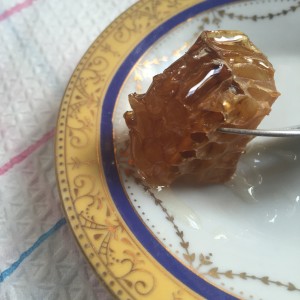



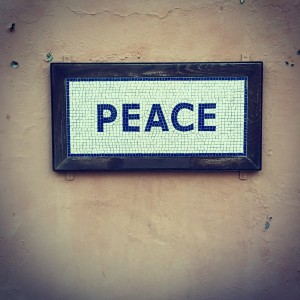 We made an early morning visit to the silversmiths in Lefkara and learned about their processes, which are mostly mechanised but involved all sorts of materials, rubber, wax, plaster and of course silver. The workshops were very interesting but we could not linger. Adriana had to get us to the airport for our incredible journey home to Glasgow, via Stansted. I’m glad to say on our way to Paphos she took us to see Aphrodite’s Rock, the ideal way to say goodbye & ευχαριστώ
We made an early morning visit to the silversmiths in Lefkara and learned about their processes, which are mostly mechanised but involved all sorts of materials, rubber, wax, plaster and of course silver. The workshops were very interesting but we could not linger. Adriana had to get us to the airport for our incredible journey home to Glasgow, via Stansted. I’m glad to say on our way to Paphos she took us to see Aphrodite’s Rock, the ideal way to say goodbye & ευχαριστώ


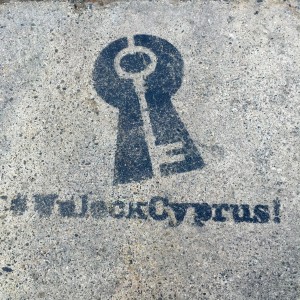 earing the capital city of Cyprus I was surprised to see a giant Turkish Cypriot flag painted onto the side of the Kyrenia Mountains – what a statement. Following the conflict of 1974, the Turkish Republic of Northern Cyprus TRNC became a self-declared state, however it is only recognised by Turkey. The political and military dispute in Cyprus remains unresolved and the island continues with life, divided. The Green Line runs 112 miles from east to west across the island, splitting families, property and communities.
earing the capital city of Cyprus I was surprised to see a giant Turkish Cypriot flag painted onto the side of the Kyrenia Mountains – what a statement. Following the conflict of 1974, the Turkish Republic of Northern Cyprus TRNC became a self-declared state, however it is only recognised by Turkey. The political and military dispute in Cyprus remains unresolved and the island continues with life, divided. The Green Line runs 112 miles from east to west across the island, splitting families, property and communities.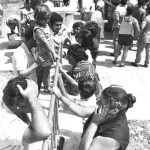
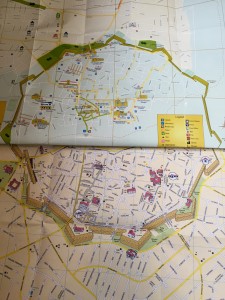 Nicosia is a vibrant & sophisticated city, with a buzz in the streets. Trendy shops & coffee houses lined the artists’ quarter. After a little pick-me-up in the form of some Cyprus coffee, μέτριο for me please, we neared the Green Line. Passports at the ready we crossed over to the north side of the city through two sets of border control, Greek & Turkish. It was easy enough the pass through, plenty of tourists and locals alike were going to & fro. Yet, CCTV was evident, uniformed armed guards were on duty & signage warned us that photography was strictly forbidden in this narrow
Nicosia is a vibrant & sophisticated city, with a buzz in the streets. Trendy shops & coffee houses lined the artists’ quarter. After a little pick-me-up in the form of some Cyprus coffee, μέτριο for me please, we neared the Green Line. Passports at the ready we crossed over to the north side of the city through two sets of border control, Greek & Turkish. It was easy enough the pass through, plenty of tourists and locals alike were going to & fro. Yet, CCTV was evident, uniformed armed guards were on duty & signage warned us that photography was strictly forbidden in this narrow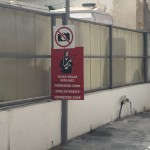


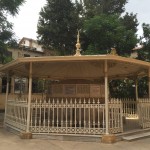
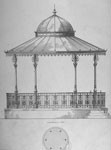
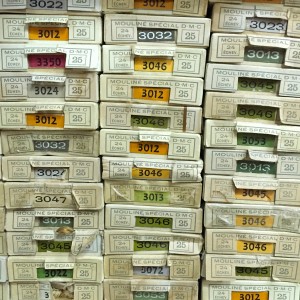 Not only is she a successful businesswoman, but Senaye also works on bi-communal projects, using craft to bring together Cypriots from both sides of the divide and trains up young apprentices too. Thereby generating hope for the future and breaking down barriers. Later we visited the amazing Yagcioglu haberdashery, which stocked the all-important
Not only is she a successful businesswoman, but Senaye also works on bi-communal projects, using craft to bring together Cypriots from both sides of the divide and trains up young apprentices too. Thereby generating hope for the future and breaking down barriers. Later we visited the amazing Yagcioglu haberdashery, which stocked the all-important 